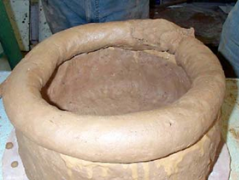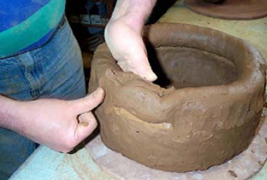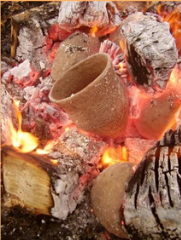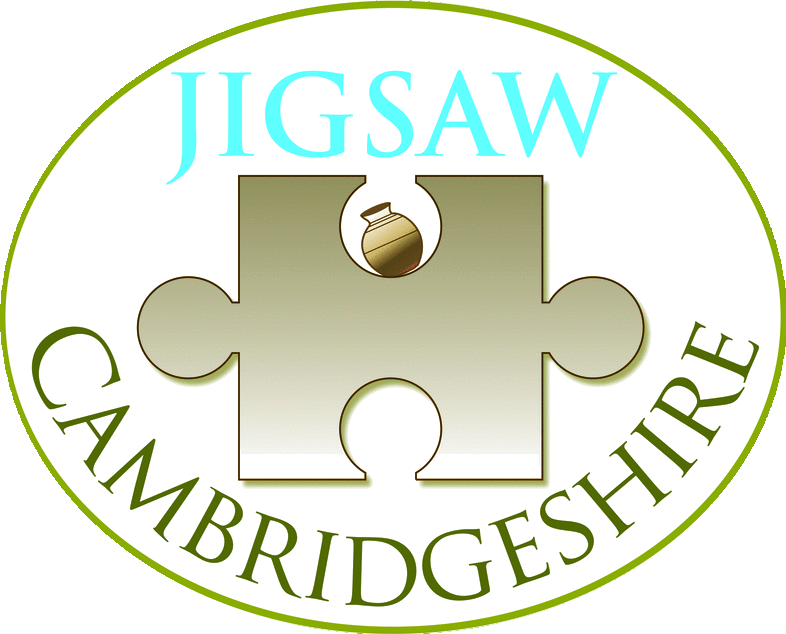Introduction
This short guide describes the types of pottery which were in use in Cambridgeshire from the Early Neolithic until the mid-Bronze Age. All pottery during this period was made and used in the household and was handmade, mostly formed using coil construction. The pots were fired in a domestic hearth, bonfire or clamp, at temperatures of 600 to 700 degrees centigrade. Based on evidence from ethnographic comparisons most archaeologists believe that clay collection, preparation and potting were undertaken by women. There were no pottery industries or production centres such as those found during the Roman or medieval periods however certain forms and fabrics were widely adopted during specific periods allowing pottery to be used for dating archaeological deposits. Prehistoric pottery may be found in both funerary and domestic deposits and archaeologists use pottery as evidence of trade and exchange and of the type and scale of activity present on an archaeological site.
Characteristics used to identify the age of a pot include form (the shape of the vessel), decoration, and fabric. Fabric here refers to the clay of which a pot was made and the inclusions within it. Inclusions are materials within the body of the clay which may be present naturally or are often deliberately added as temper, to aid construction, firing and resilience of the pot or for cultural or social reasons. The colour of the finished pot tells archaeologists something of how it was fired. Dark grey or ‘reduced’ pots are fired in an atmosphere where oxygen has been excluded whilst lighter, red or orange vessels are fired in an oxygen rich atmosphere. The consistent firing and regular colours found in much earlier prehistoric pottery indicate that ancient potters were skilled in controlling the firing conditions in which they produced their vessels.


Experimental archaeology is a good way of studying prehistoric pottery manufacture. The images above from ‘The Orkney Grooved Ware Experiment’ show pots being made using coil building.

The image above by experimental potter Graham Taylor shows bonfire firing of replica prehistoric pottery.
Further Reading
Elsdon, S., 1989, Later Prehistoric Pottery. Princes Risborough: Shire Publications.
Gibson, A., 1986, Neolithic and Early Bronze Age Pottery. Princes Risborough: Shire Publications.
Gibson, A., 2002, Prehistoric Pottery in Britain and Ireland. Stroud: Tempus
Gibson, A. and Woods, A., 1997, Prehistoric Pottery for the Archaeologist (2nd ed.). Leicester: Leicester University Press.
Lang, Lloyd, 2003. Pottery in Britain 4000BC to AD 1900. A Guide to Identifying Pot Sherds. Witham, Greenlight Publishing.
Prehistoric Ceramic Research Group Guidelines http://www.pcrg.org.uk/News_pages/PCRG%20Gudielines%203rd%20Edition%20(2010).pdf
There is also a more in-depth Jigsaw guide to Late Bronze Age and Iron Age Pottery found in Cambridgeshire available to download from our website: http://jigsawcambs.org/
- Prev
- Next >>




